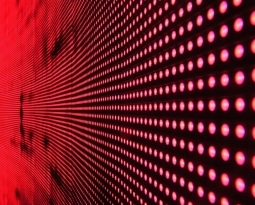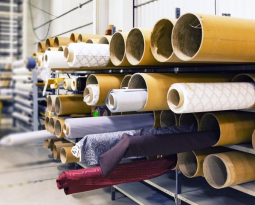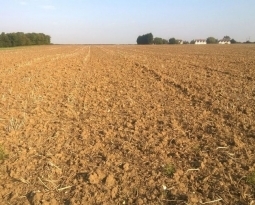Texas Comptroller Publishes New Amendments to the State R&D Tax Credit
The Texas Comptroller of Public Accounts has been working on amendments to its franchise tax rule, 34 Tex. Admin. Code Section 3.599. These amendments were filed with the Secretary of State on October 4, 2021 and published October 15, 2021. These amendments will retroactively apply to Texas franchise tax reports due on or after January 1, 2014.
These amendments focus on Research and Development (R&D) Tax Credit. Further amendments affect the R&D exemption under its sales and use tax rule, 34 Tex. Admin Code Section 3.340.
Franchise Tax Rule, 34 Tex. Admin. Code Section 3.599
The Texas Comptroller changed the proposed text for both rules published in the Texas Register on April 16, 2021. These changes include:
- Incorporating the four-part test from the federal research credit articulated in IRC Section 41(d)
- Amending the definition of “qualified research expense” (QRE) to mean the sum of all in-house research and contract research expenses
- Clarifying that the applicable reference to the IRC for R&D credit purposes is the IRC in effect as of December 31, 2011, and specifying that any federal regulation adopted after this date is only included in this term to the extent a taxpayer must apply that regulation in the 2011 tax year
- Listing activities that do not constitute qualified research activities (QRA) (such as “internal use software”)
- Clarifying that tangible personal property will not qualify as a research expense for purposes of the TX R&D credit if the taxpayer claimed a manufacturing or resale sales tax exemption when purchasing that property
- Modifying credit eligibility requirements
- Providing guidance to Texas franchise tax combined groups claiming the Texas R&D credit
Four Part Test
This test is used in the federal R&D tax credit to outline the basic requirement for research activities to be qualified research. The first part outlines the Business Component Test while the last outlines the Process of Experimentation Test.
The amended Business Component Test explicitly states that business component’s do not include a service provided to a customer or a design.
The amended Process of Experimentation Test identifies “non-experimental methods” such as trial and error. In doing so, they expand on factors the Texas Comptroller may consider in determining whether a trial-an-error method is experimental or non-experimental in a modified subsection 3.599(c)(1)(D)(vi). Ultimately this is a non-exhaustive list and not all factors need to be checked. The amendments go further to include that, in some cases, computer-aided simulation and modeling may be considered an experimental process.
Software
These modifications also include much more insight into the role of software in R&D – a long standing question for those in the industry. For instance, the addition of a non-exclusive list indicates which software development activities are likely and unlikely to constitute qualified research.
Excluded Research Activities
Modifications included a list of activities that are not qualified. This list is based on the federal regulations in IRC Section 41(d)(4) and Treas. Reg. Sections 1.41-4(c) and 1.41-4A(d) (specifically related to the funded research exclusion). While most of these exclusions emulate the federal rules, internal use software is a notable exception. The final rules define internal use software as computer software developed for use in the operation of the business, rather than basing the definition on the federal regulations.
Excluded activities as described in the final rule include:
- Research after commercial production of the business component
- Adaptation of existing business components
- Duplication of existing business components
- Surveys, studies, market research, etc.
- Internal use computer software
- Social sciences, arts or humanities
- Research funded by a grant, contract or by another person or governmental entity
Credit Eligibility Requirements
As with all other aspects of this credit, the burden of proof is on the taxpayer. This includes the burden of establishing their entitlement to and value of the credit using clear and concise evidence. The definition and expectation for contemporaneous documentation differs from the federal R&D credit, following the standards used in all other Texas franchise tax credits instead. The final rule requires
- All QREs to be paid or incurred in connection with QRAs
- All QREs to be supported by contemporaneous business records
Other Changes
A proposed change to the provisions on the impact of combined reporting on the R&D credit in Section 3.599(i). This initial proposal was significantly modified before being finalized. The now final rule clarifies that the combined group is the taxable entity for purposes of combined reporting, and requires the total qualified research expense of each member of the combined group to be added together to determine the total credit claimed on the combined report. In contrast, the proposed amendments would have required each member of a combined group to determine its credit as if it were an individual taxable entity and then add together the total credits for each entity to determine the credit claimed on the combined report.
If the members of this combined group change, the new group is seen as a new taxable entity. This means the new entity cannot carry forward the previous R&D credit.
Summary
There remain several important differences between the federal IRC Section 41 rules and the final Texas R&D rules, which mean taxpayers may require separate federal and Texas R&D credit calculations – even when all QRAs are performed in Texas. This increases the complexity of the filing, the cost associated for compliance, and the burden associated with storing and keeping of relevant records.
Are you developing new technology for an existing application? Did you know your development work could be eligible for the R&D Tax Credit and you can receive up to 14% back on your expenses? Even if your development isn’t successful your work may still qualify for R&D credits (i.e. you don’t need to have a patent to qualify). To find out more, please contact a Swanson Reed R&D Specialist today or check out our free online eligibility test.
Who We Are:
Swanson Reed is one of the U.S.’ largest Specialist R&D tax advisory firms. We manage all facets of the R&D tax credit program, from claim preparation and audit compliance to claim disputes.
Swanson Reed regularly hosts free webinars and provides free IRS CE and CPE credits for CPAs. For more information please visit us at www.swansonreed.com/webinars or contact your usual Swanson Reed representative.

















